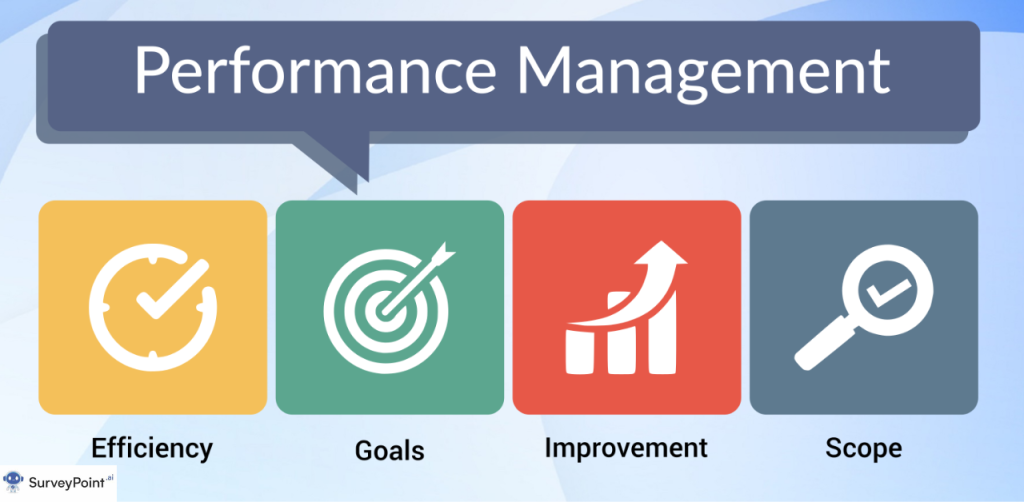
Mastering Modern Performance Management: Navigating Best Practices and Systems
In the dynamic landscape of human resources, performance management plays a pivotal role in steering organizational success. This blog post will guide you through the evolution from traditional to modern performance management systems, explore the intricacies of the performance management process, delve into various types of performance management systems in HR, outline best practices, discuss types of performance monitoring systems, and uncover the six key purposes of performance management.
The Evolution: Traditional vs Modern Performance Management
Traditional Performance Management
Traditional performance management has long been characterized by annual or biannual reviews, a focus on individual rankings, and a tendency to be more punitive than developmental. This approach often resulted in inflexible processes that lacked agility and failed to adapt to the rapidly changing nature of work.
Modern Performance Management
Modern performance management, on the other hand, is a paradigm shift. It emphasizes continuous feedback, a focus on employee development, and a move away from rigid annual appraisals. This approach recognizes the importance of regular communication, agility, and the alignment of individual goals with organizational objectives.
Performance Management Process Flow Chart
Navigating the Performance Management Journey
A performance management process flow chart provides a visual representation of the key stages involved in managing employee performance. Let’s explore the essential steps in this process:
- Goal Setting:
- Establishing clear and SMART (Specific, Measurable, Achievable, Relevant, Time-bound) goals that align with organizational objectives.
- Regular Check-Ins:
- Frequent one-on-one meetings between managers and employees to discuss progress, challenges, and provide feedback.
- Feedback and Coaching:
- Ongoing feedback and coaching to support employee development and address any performance issues.
- Mid-Year Review:
- A mid-year check-in to assess progress against goals and make any necessary adjustments.
- End-of-Year Appraisal:
- A comprehensive review at the end of the year, focusing on accomplishments, areas for improvement, and future goals.
- Recognition and Rewards:
- Acknowledging and rewarding exceptional performance to motivate and retain top talent.
Types of Performance Management Systems in HR
Tailoring Systems to Organizational Needs
- 360-Degree Feedback Systems:
- Involving feedback from peers, managers, subordinates, and even clients or customers to provide a comprehensive view of an employee’s performance.
- Continuous Performance Management Systems:
- Emphasizing ongoing feedback and regular check-ins, these systems align with the principles of modern performance management.
- Goal-Oriented Performance Management Systems:
- Focusing on setting and achieving specific goals that contribute to individual and organizational success.
- Rating Scale Systems:
- Utilizing numerical or qualitative scales to assess employee performance based on predefined criteria.
- Behaviorally Anchored Rating Scales (BARS):
- Combining quantitative and qualitative elements, BARS link specific behaviors to performance ratings for a more nuanced evaluation.
Best Practices in Performance Management
Cultivating Success Through Proven Strategies
- Clear Communication:
- Establish transparent communication channels for goal setting, feedback, and coaching.
- Continuous Feedback:
- Embrace a culture of ongoing feedback to address issues promptly and support employee development.
- Employee Involvement:
- Involve employees in goal-setting processes, ensuring alignment with their career aspirations and organizational objectives.
- Training for Managers:
- Provide training to managers on effective communication, coaching, and performance evaluation techniques.
- Regular Check-Ins:
- Replace the annual review with regular check-ins to maintain open lines of communication and address issues in real-time.
Types of Performance Monitoring Systems
Enhancing Oversight for Optimal Results
- Key Performance Indicators (KPIs):
- Identifying and monitoring specific metrics that align with organizational goals and individual performance.
- Balanced Scorecard Systems:
- Utilizing a comprehensive approach that considers financial, customer, internal processes, and learning and growth perspectives.
- Employee Dashboards:
- Providing employees with access to personalized dashboards that showcase their performance metrics and progress.
- Real-Time Monitoring Tools:
- Implementing tools that offer real-time insights into employee performance, allowing for immediate intervention when needed.
Six Purposes of Performance Management
Understanding the Core Functions
- Setting Expectations:
- Clarifying job expectations and performance standards to ensure alignment with organizational goals.
- Evaluating Performance:
- Assessing employee performance against established goals and criteria.
- Employee Development:
- Identifying areas for improvement and providing opportunities for skill development and growth.
- Compensation Decisions:
- Informing decisions related to salary adjustments, bonuses, and promotions based on performance.
- Succession Planning:
- Identifying high-potential employees and grooming them for future leadership roles.
- Feedback and Communication:
- Facilitating open communication between managers and employees to foster a positive work environment.
Conclusion
In conclusion, modern performance management represents a significant departure from traditional practices. By adopting agile processes, leveraging various performance management systems, and embracing best practices, organizations can cultivate a culture of continuous improvement, employee development, and ultimately, organizational success.
Navigating the complexities of performance management requires a thoughtful approach that aligns with the unique needs of each organization. By embracing the principles outlined in this guide, organizations can optimize their performance management processes, enhance employee engagement, and position themselves for sustained success in today’s competitive business environment. For more information check out- surveypoint.ai




